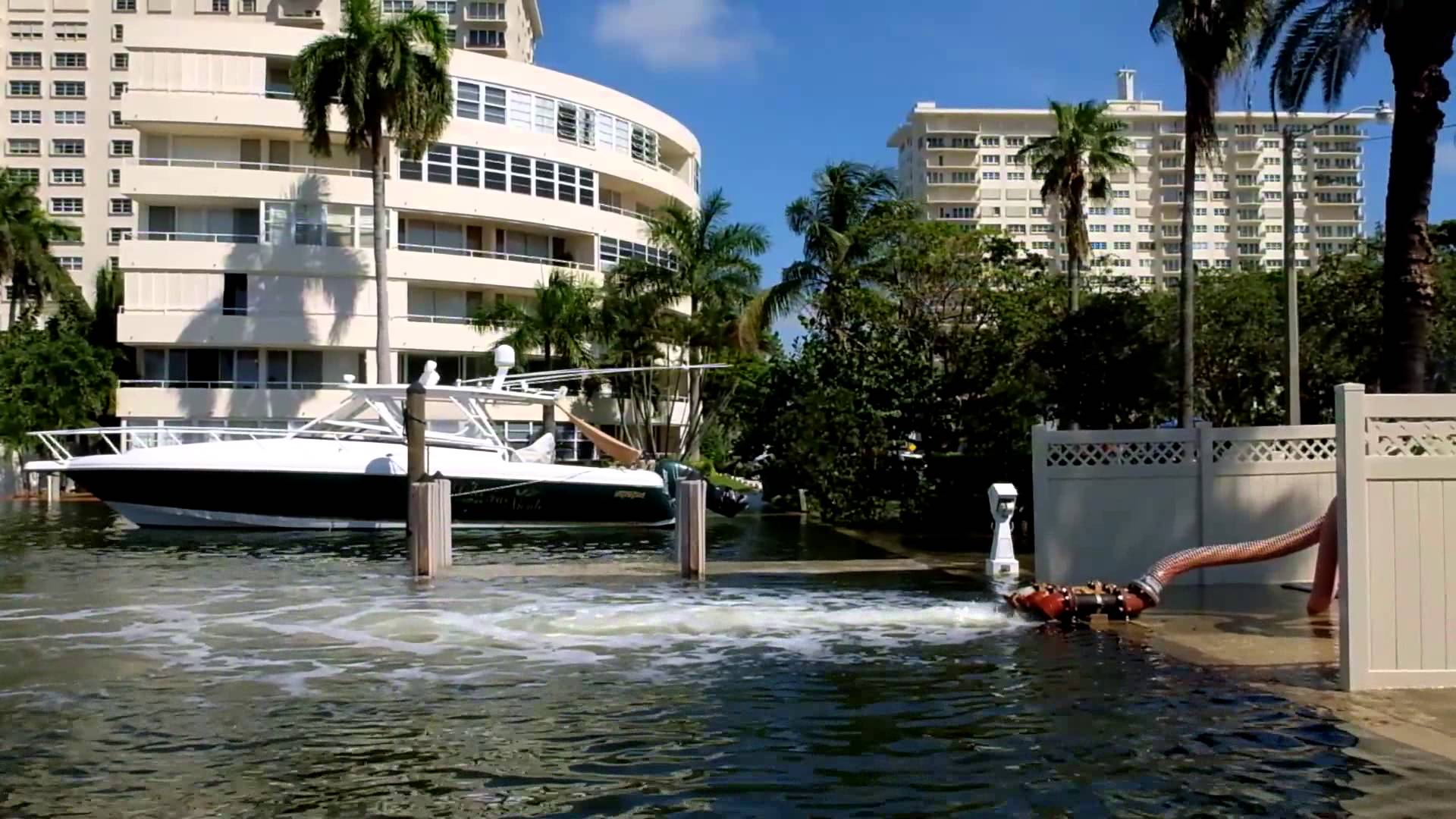
Ft. Lauderdale Takes Action Against Rising Tides
Ft. Lauderdale is a low lying city. A large percentage of the city lies below 5 feet in elevation. The “higher” elevation is mostly 6 to 10 feet in elevation. Ft. Lauderdale is also a coastal city. Its beach is a barrier island, like all South Florida beaches. Several bridges cross the Intercoastal waterway. “Finger Islands” were built in the Intercoastal decades ago helping to give Ft. Lauderdale the nickname, the “Venice of America”.
But Ft. Lauderdale is more than just the Atlantic and the Intercoastal. It is a river town. The New River, which runs through the middle of downtown, was the original trading highway of the city and leads out to the Everglades. Canals cross through the city. As such, Ft. Lauderdale is a city of waterfront property, residential and commercial. And, Ft. Lauderdale is a city facing a short term and long term crisis – tidal flooding caused by sea level rise.
The 2016 King Tides have made headlines, particularly in Miami Beach. Ft. Lauderdale has been severely impacted by this years lunar phenomenon as well. The average high tide at Andrews Avenue on the New River, in the heart of downtown during the last three King Tides this season ran from 6 inches to 1 foot above normal. While downtown seawalls have not yet been breached, flooding in Las Olas Isles and many other neighborhoods has been severe. Over the last several years, the city has begun to prioritize neighborhoods and complete a Multi-Year Storm Water Master Plan. The Master Plan improvements include many features including tidal control valves, recharging drainage wells, exfiltration trenches, bioswales, pervious pavers and pave drains, seawall repairs and upgrades, stromwater preserves and pumping stations. 116 tidal valves have been installed to date and 27 are in process. The city has identified 16 action areas to be completed between fiscal years 2016-2021. 46 capital projects will be completed in that time period.
Property owners will be required to get involved in the fight against sea level rise. The city passed Ordinance 47-19-3 last week. This ordinance sets minimum and maximum seawall elevations. It requires property owners to maintain their seawalls in good repair and requires property owners to prevent tidal waters entering their property from injuring other property. Therefore, there will be civil liability if flooding on your property enters your neighbor’s property. The city hopes that the infrastructure improvements that it is making to prevent flooding on the streets and remove water from the streets, together with this ordinance, which will prevent water from coming over seawalls and flood property and streets, that Ft. Lauderdale can successfully combat tidal flooding for years to come. An additional component of the ordinance is that base floor elevations of buildings will rise as new construction and renovations start. This will minimize damage from flooding that does occur.
It is not entirely clear where funding for these projects will come from. Ft. Lauderdale and all Broward County cities were hopeful that Broward voters would approve the penny sales tax that was on the November ballot. One-half cent of the proposed tax was earmarked for infrastructure improvements, including initiatives to address sea level rise. However, the initiative was rejected. Palm Beach County voters approved a similar measure. Ft. Lauderdale will explore other funding initiatives in the coming months.
Ft. Lauderdale is taking a forward thinking approach to an urgent problem. City leaders have been working on these plans for several years. While Ft. Lauderdale does not get the press or the attention that Miami Beach gets, its efforts should not go unnoticed.




No Comments
Sorry, the comment form is closed at this time.